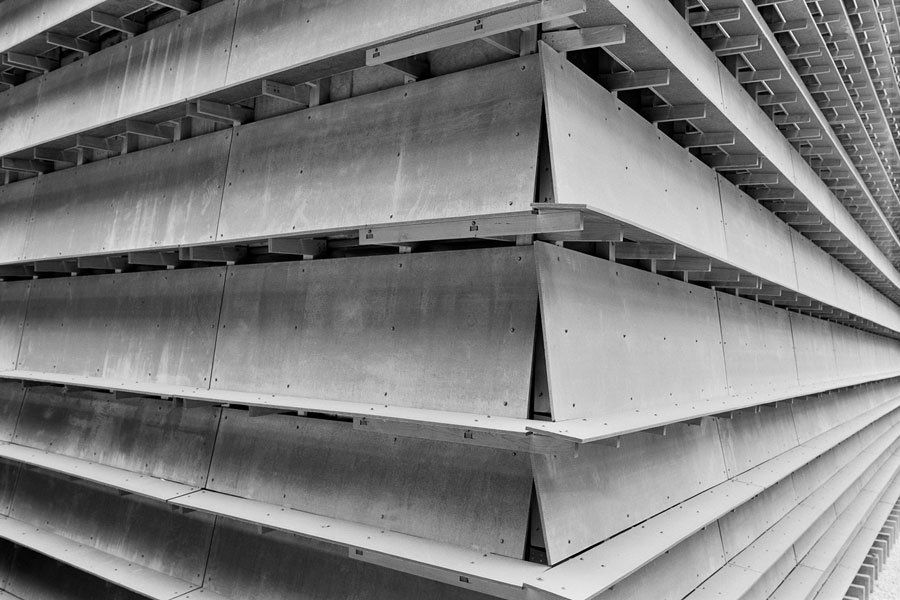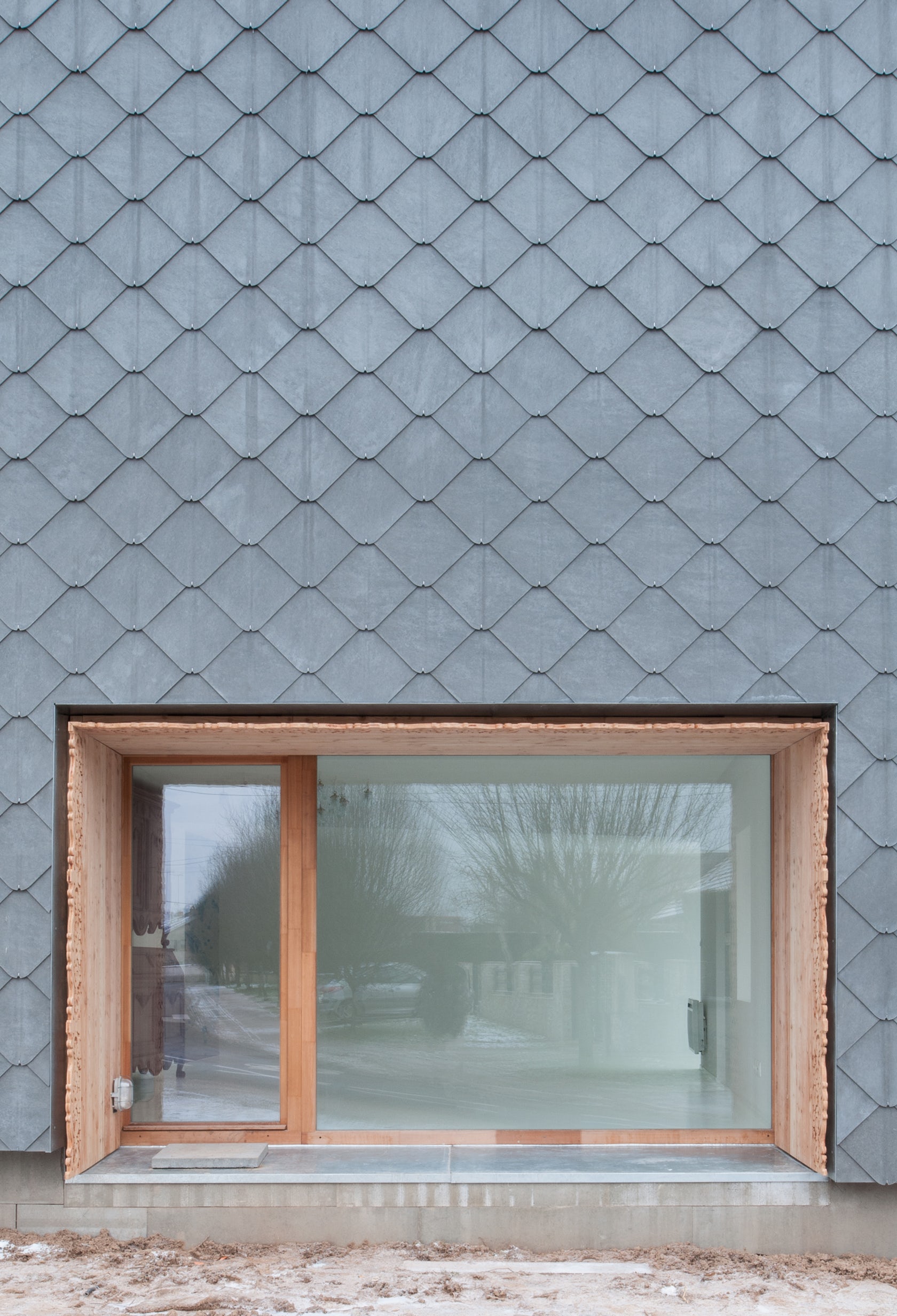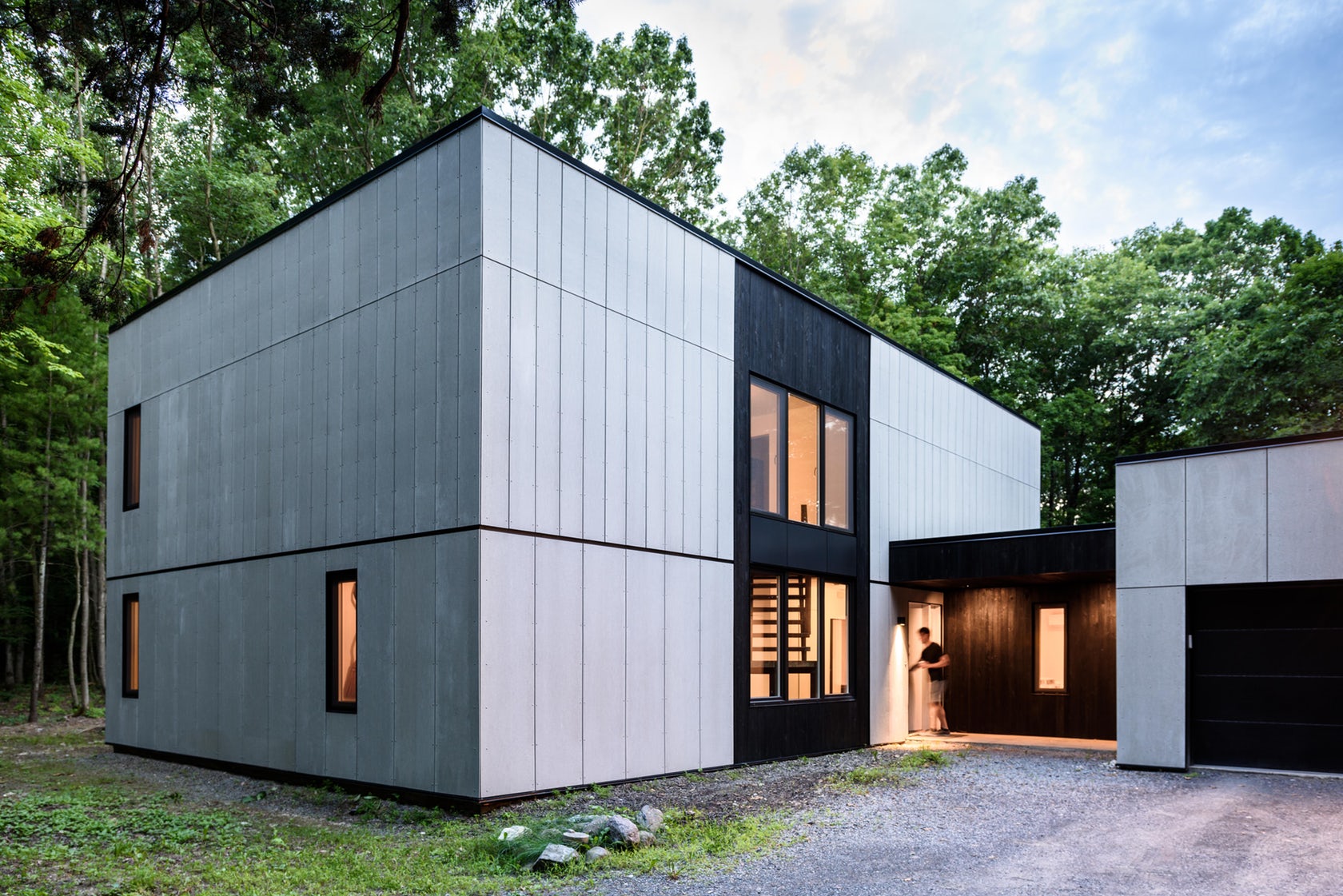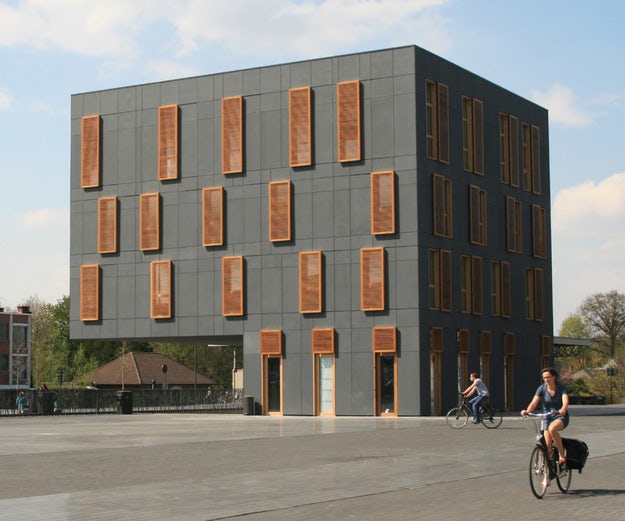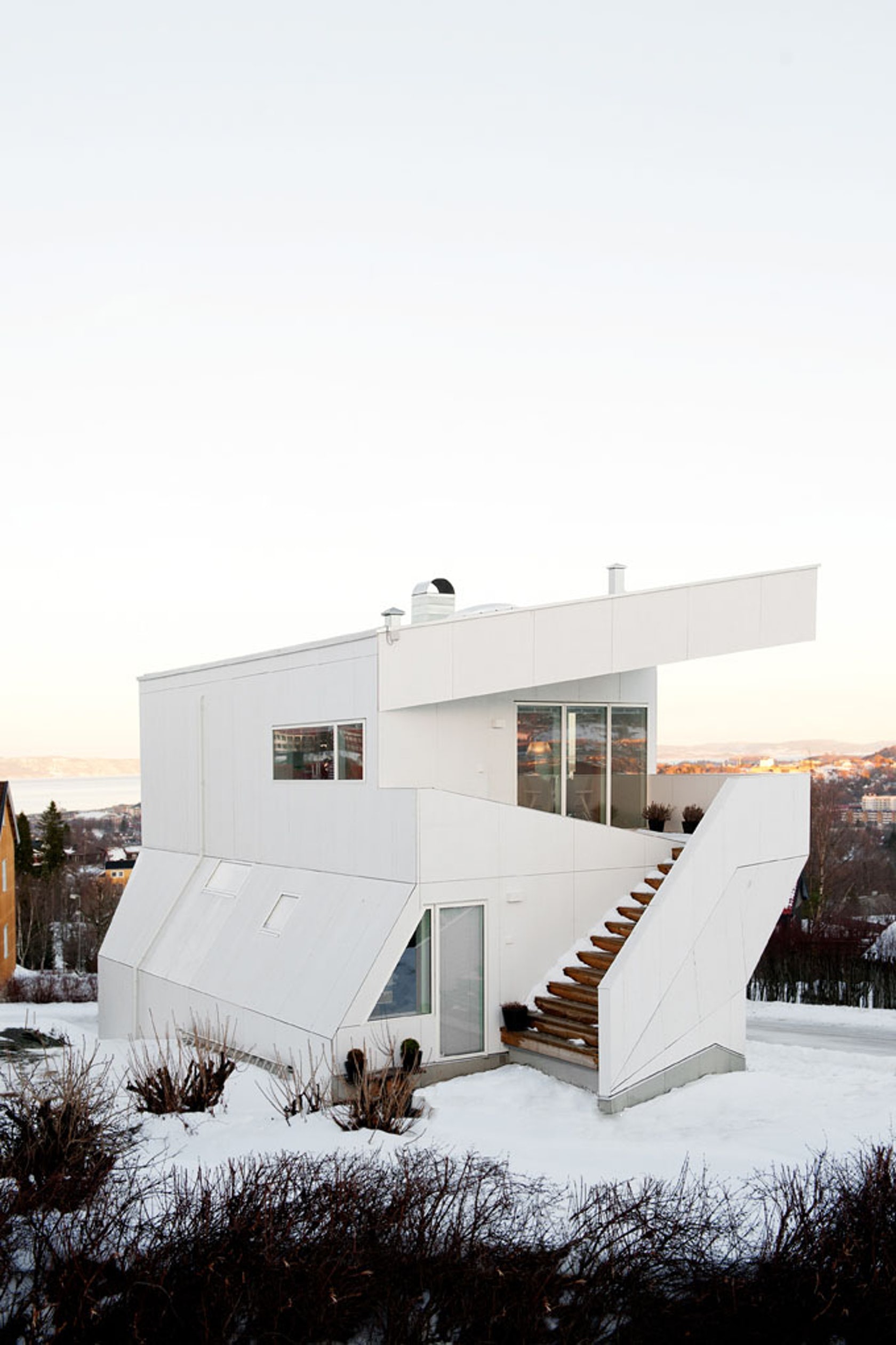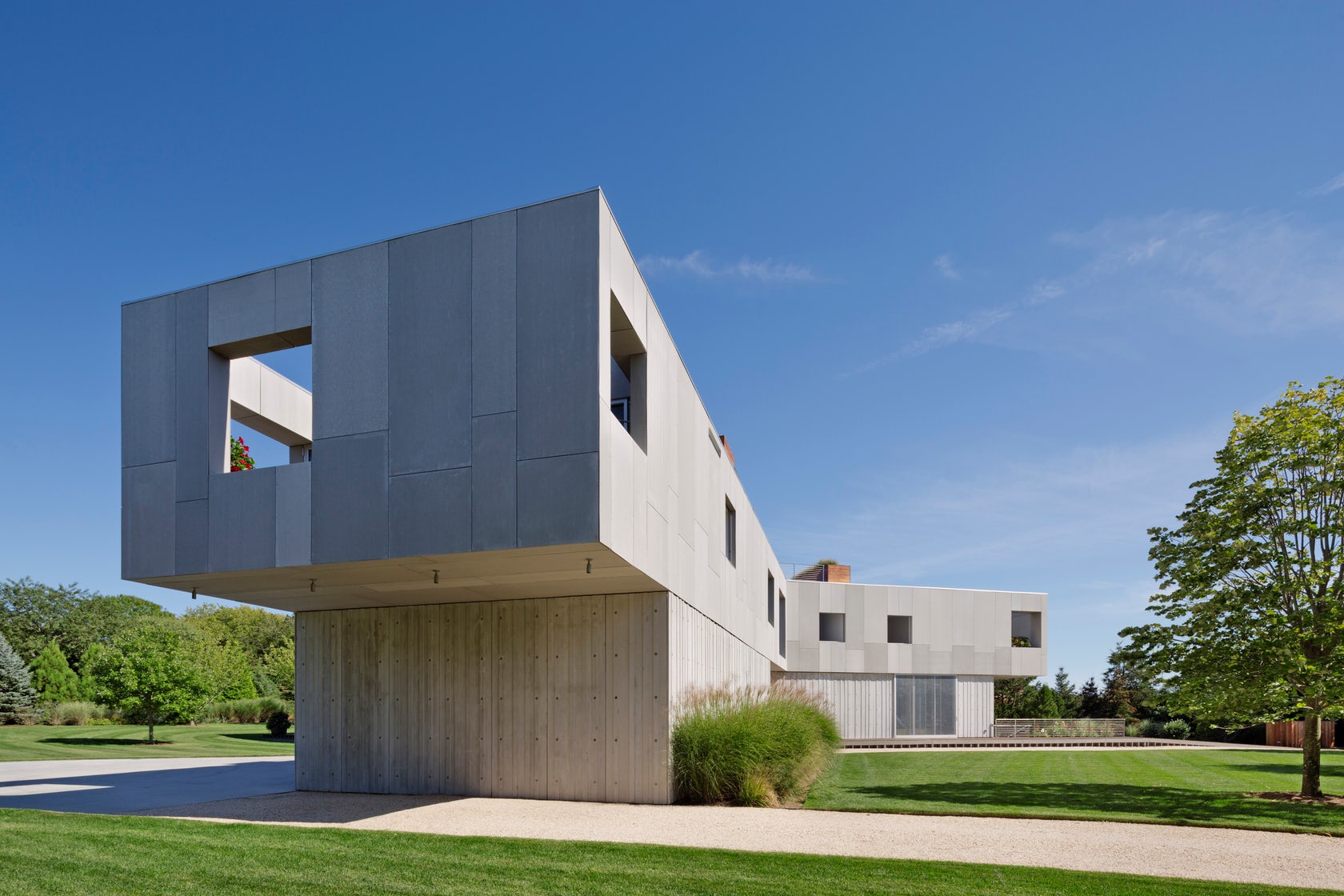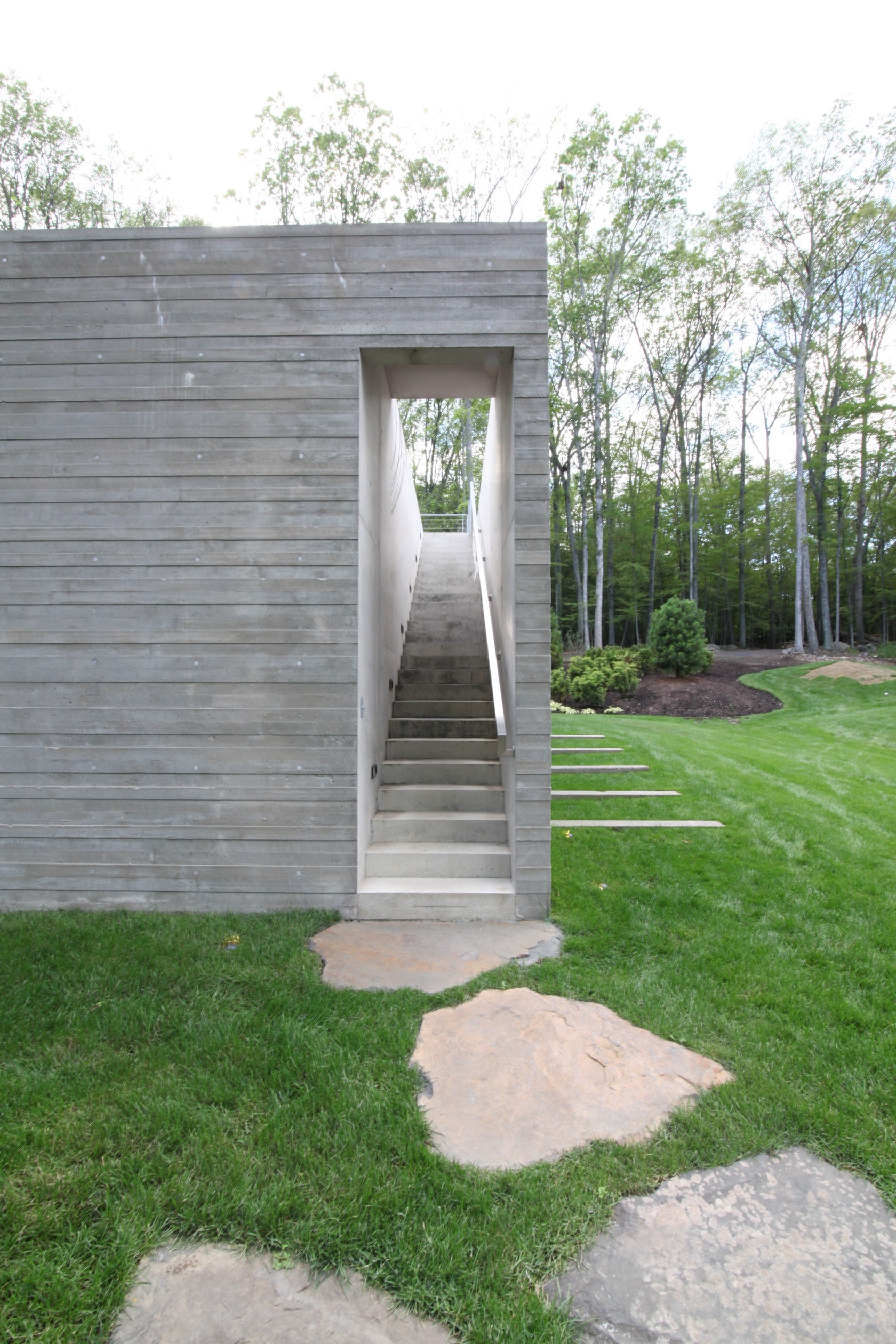Architects: Want to have your project featured? Showcase your work by uploading projects to Architizer and sign up for our inspirational newsletters.
If fiber cement were a character from a teen rom-com, it would be the nice guy. The reliable friend who is not too flashy or too demanding, but stands by you even as you opt for the flashier date; only to be there with open arms when you go over budget and realize you had the right answer standing in front of you the whole time.
OK, don’t focus too much on that metaphor; the point is that fiber cement cladding is a great, durable low-cost alternative to more extravagant cladding options like wood and stone. It is often a background material, the kind of lightly textured stuff that you could walk by every day and not really notice. But when you do notice it, you realize that it is actually quite beautiful. Maybe it is gently washed with gray tones, neatly accented with corner screws or tiled in a nice fractal pattern.
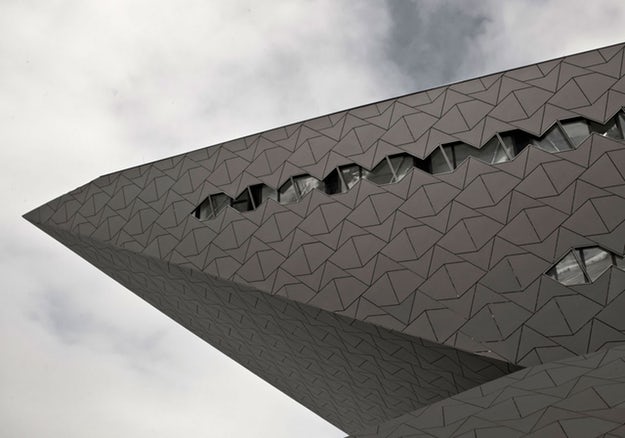
Festival Hall of the Tiroler Festspiele Erl by Delugan Meissl Associated Architects features an Equitone façade
Fiber cement is usually compared to other budget-friendly heavily processed materials like PVC or aluminum panels. One of the main reasons that architects opt for fiber cement over other low-cost alternatives is that, when detailed properly, it looks like a much more expensive product. Dense, high-quality fiber cement panels can mimic the appearance of stone or concrete at a much lower cost.
Fiber Cement Cladding Categorization
James Hardie is the biggest name in the game, and in North America, Hardie board is almost synonymous with fiber cement panel. Other industry leaders include Equitone, Allura and Nichiha. Because manufacturing fiber cement panels is a heavy-industry process, there are not a lot of small or local brands, as there are with some other common building materials.
Shakes and Shingles: Fiber cement shakes and shingles are harnessed on both small and large façades. They are used to imitate the appearance of wood without the associated wear and tear. Shakes and shingles are available as both individual pieces and panels. They are also available in various shapes, including half-rounds and octagons. Most manufacturers create shakes with straight, wavy and thatched edges. For more information, see Allura’s shakes, shingles and half-rounds.
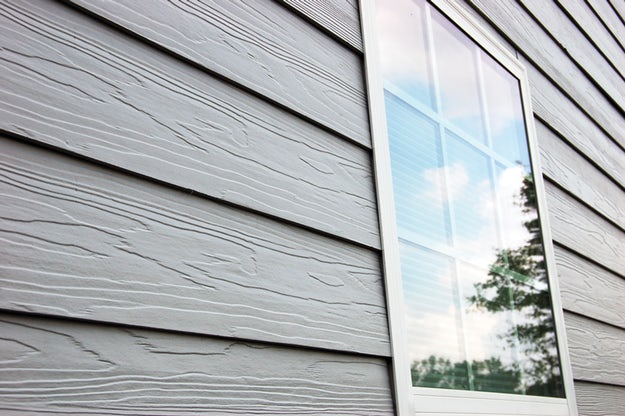
Fiber cement horizontal lap siding; image via North Knox Siding and Windows
Horizontal Lap Siding: Horizontal or dutch lap siding is by far the most common style used for residential siding. This type of cladding involves long, even pieces of siding that are a bit thicker at the bottom than they are at the top. Installed from the bottom up, each subsequent piece is installed to overlap the previous one. Horizontal lap siding is available in a variety of widths, ranging between 5.25 to 12-inch wide panels. Edges can be completely straight or beaded.
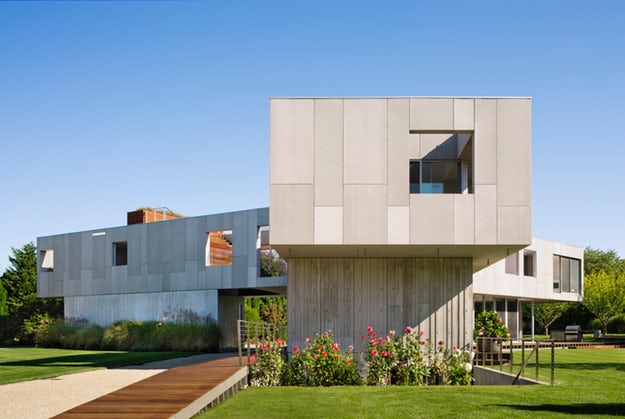
36SML Beach House by Levenbetts uses fiber cement panels to clad its upper story
Shiplap Siding: Unlike horizontal lap siding, where the bottom of one board overlaps another, shiplap boards appear to be butted right up against one another. Typically installed using a tongue and groove system, this creates a clean, smooth surface, which is common among contemporary homes.
Vertical Siding: With vertical siding, you may opt for a rustic board-and-batten look, or a cleaner look with simple minimalist lines. For more information, see HardiePanel Vertical Siding.
Soffit: Available in vented and non-vented style, many fiber cement manufacturers make soffit panels that will neither warp nor rot, making it easier to coat the underside of architectural eaves. Vented styles will allow you to better the control air flow throughout your building.
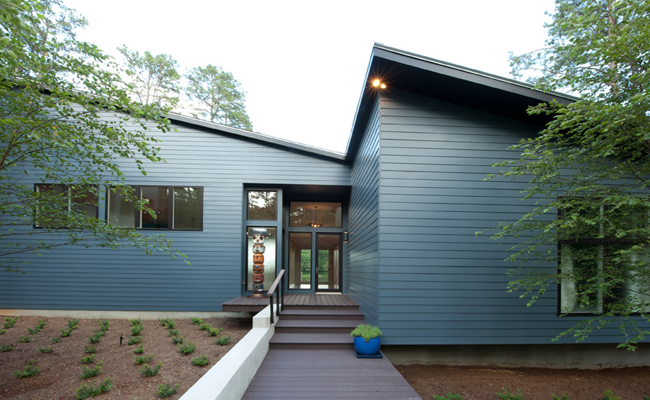
Custom home featuring Nichiha horizontal lap siding; Image via Nichiha
Performance
Moisture Protection: All by itself, fiber cement is not well-equipped to protect a building against moisture penetration. However, most fiber cement cladding manufacturers produce backer boards and other underlay materials that can enhance the building envelope’s overall performance.
James Hardie, for example, offers several products that can be combined to create a building with highly durable moisture protection. These include the HardieWrap weather barrier, HardieWrap Pro-Flashing, HardieWrap Flex Flashing and HardieWrap Seam Tape. The HardieWrap weather barrier reduces water intrusion while allowing water vapor to escape. HardieWrap Flashing prevents water and air intrusion around windows and doors. No matter which manufacturer you are working with to bring your project to life, ask them about products that will serve similar purposes.
Thermal Insulation: On its own, fiber cement cladding has a very low R-value. In order to improve its thermal resistance, it is necessary to supplement fiber cement with additional insulation. Luckily, most fiber cement manufacturers offer thermal breakage products that can be incorporated to prevent heat loss through the building envelope. Talk to your manufacturers and tell them the minimum R-value that needs to be reached with your building.
Acoustic Insulation: Fiber cement sheets rate poorly in terms of sound transmission. However, similar to moisture protection and thermal insulation, additional layers can be added to enhance the building envelope’s overall performance. Make sure to let your manufacturer know if acoustic performance is a central tenet of your design.
Aesthetics
Color: Most large fiber cement cladding manufacturers offer products in an endless array of colors. However, if you would like to customize your own paint or stain, consider specifying pre-primed products.
Finishes: Fiber cement finishes range from smooth to highly textured, as well as those that imitate wood, stone and brick. Nichiha, for example, offers 15 different finishes that skillfully mimic a multitude of raw materials. While many architects shy away from imitation materials, there are a whole set of advantages to using fiber cement over organic materials like natural wood, that are well worth investigating.
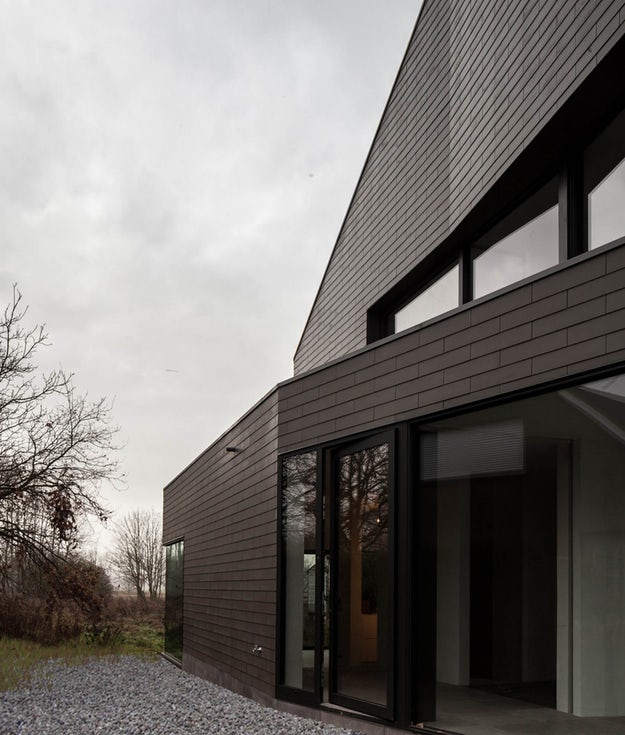
EMME House by Areal Architecten clad in fiber cement shingles, image by Thomas De Bruyne
Now a century old, fiber cement continues to promise the best of many worlds. It is fire-resistant, provides durability and longevity and maintains a sought-after look with very few noticeable signs of aging. As candidly expressed by Bethesda-based architects Mark McInturff, “Bugs don’t eat it, paint stays on it and it doesn’t rot.” Pretty neat, right? To learn more about this debate, which may inform your material selection, take a look at Fake It Till You Make It: Is It Ever OK To Disguise Fiber Cement As Natural Wood?
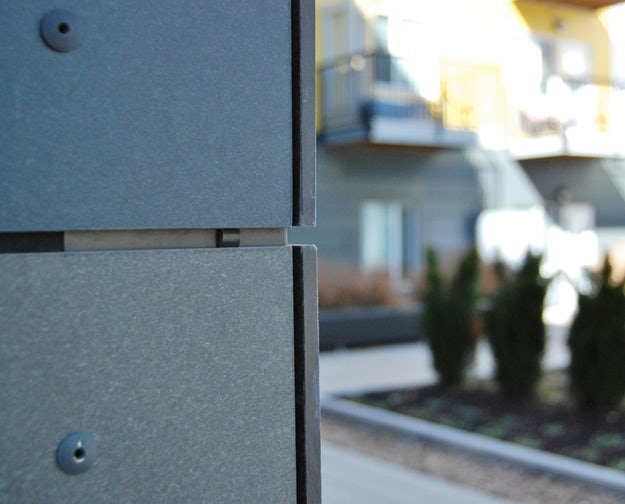
Image via Pinterest
Corners: One challenge that has long plagued architects and contractors alike is the art of creating a seamless corner on a fiber cement-clad building. There are several companies whose refined cladding techniques help achieve this look. James Hardie, offers details on how to produce mitered corners: joints made from two pieces of beveled materials that create a neat 90-degree angle. Nichiha also offers mitered corners; this feature is available in the same finishes as all of their horizontal architectural wall panels. For more information on virtually seamless corner details, check out this article on how to detail a perfectly seamless fiber cement-clad corner.
If you’re interested in the look and feel of stone but don’t always have the budget for it, fiber cement is a great material to consider. It has a lot of potential that designers have only just started exploring. Levenbetts has used the material on multiple projects, tiling panels of slightly different sizes and tones for an understated, clean effect, and Delugan Meissl Associated Architects has used it as a dark, intricately tiled skin that forms a crystalline mass. It’s relatively easy to cut into whatever shape you want, and because the material is so common, contractors should know how to install it in many different contexts.
Case Studies
A Material That Just Won’t Quit: 7 Equitone Façades
Equitone is a modern through-colored material made from fiber cement, which is used in a variety of applications, especially façades. Produced since the 1950s under the original name Eternit, these panels show the unique, raw and untreated texture of the fiber-cement base material. Ranging from private residences and pavilions to multifunctional buildings and festival halls, the projects enclosed in this collection show how Equitone can be applied to a variety of building types and sizes. Check out the full story here.
How to Detail a Perfectly Seamless Fiber Cement-Clad Corner
One challenge that has long plagued architects and contractors alike is the art of creating a seamless corner on a fiber cement–clad building. The idea is to make sure the sheets of fiber cement don’t “end” or break at the point the building’s shape changes or abut a secondary vertical element at the corner. With the information and tools enclosed in this article, creating a seamless corner detail will cease to be a cause of frustration. Check out the full story here.
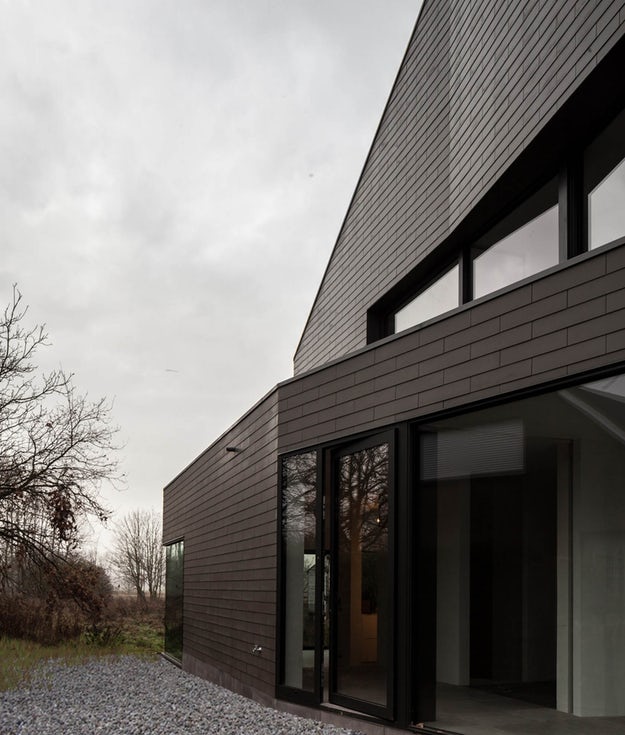
EMME House by Areal Architecten; image by Thomas De Bruyne
Fake It Till You Make It: Is It Ever OK to Disguise Fiber Cement as Natural Wood?
While no other building materials hold the beauty or emotional conviction of wood, imitative alternatives have arisen because cladding an entire building in timber is expensive, prone to warping and extremely tiresome to maintain. And so, if you have ever been curious about the potential of fiber cement cladding as it compares to natural wood, this is the article for you. Check out the full story here.
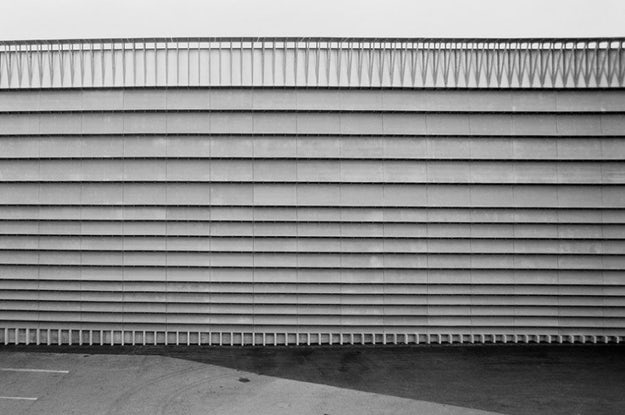
Image via a f a s i aarchzine
Architectural Details: Herzog & de Meuron’s Masterful Fiber Cement Warehouse
When designing projects with fiber cement cladding — trust us, this is important — it is valuable to check out precedent case studies where the ever-popular material has been used to create unexpectedly iconic architecture. In 1987, Herzog & de Meuron created a fully automated warehouse for Ricola that features a rhythmic façade wrapped in gray panels of evolving heights. Their vision for the 31,200-square-foot structure set off a new trend in purposefully exposed exterior architecture. Check out the full story here.
Architectural Details: LEVENBETTS’ Love of Cement-Clad Homes
LEVENBETTS, a small studio based in Chelsea, has extensive experience working with fiber cement on their many projects in the city and around the world, unveiling the innumerable ways the versatile material can be expressed on a building. Some of their New York State–centric projects include stunning uses of fiber cement cladding showcasing their love for manipulating the raw material into minimalist geometric forms. Interested in knowing why these architects love cementitious materials? Check out the full story here.
Architects: Want to have your project featured? Showcase your work by uploading projects to Architizer and sign up for our inspirational newsletters.
Feature image: New Paltz House by AlexAllen Studio.
